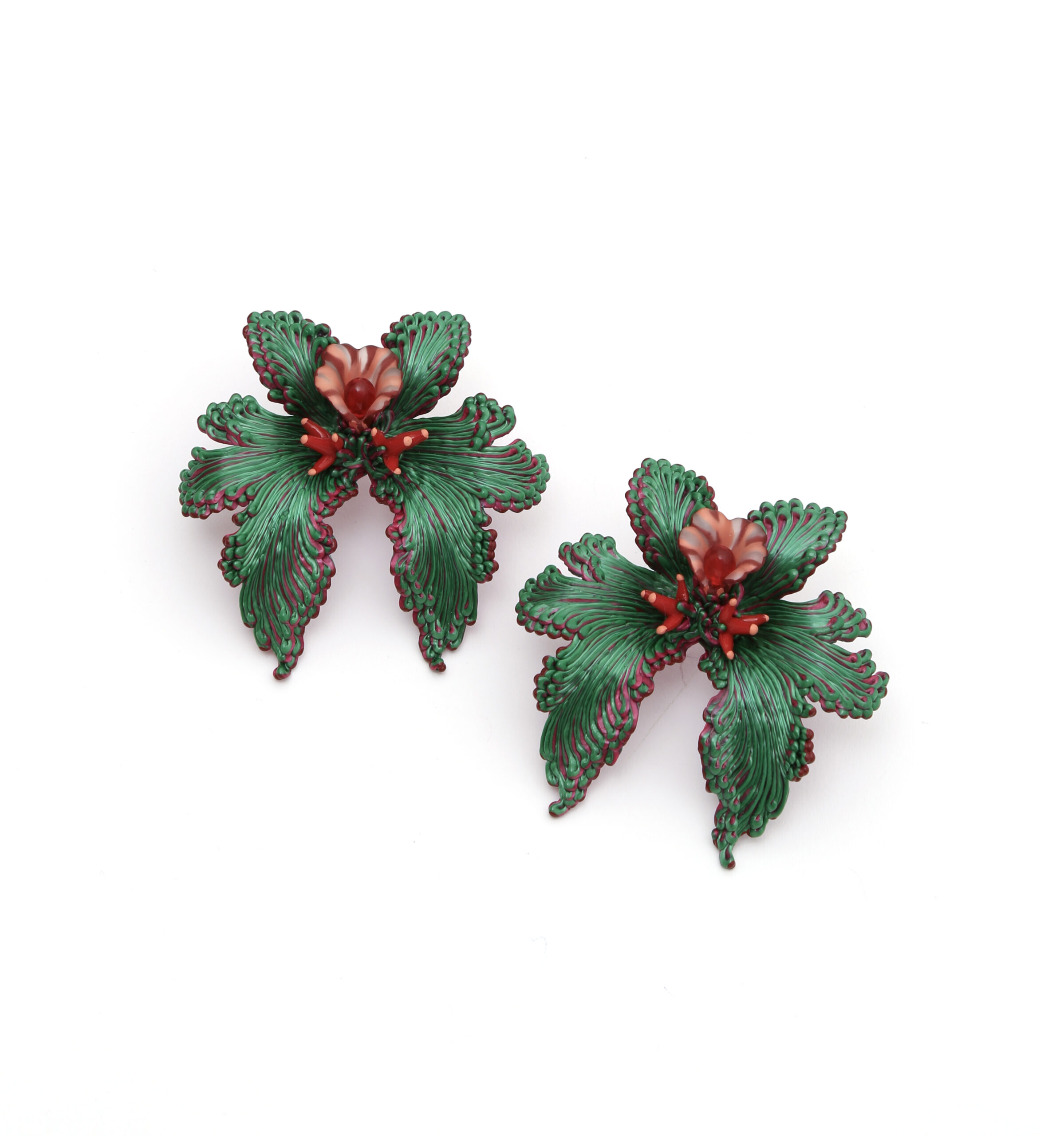Carina Shoshtary

Born in Augsburg, Germany, in 1979, Carina was ten years of age when the Berlin Wall came down, an event which lead to a strong appreciation for the historical and nostalgic value of the guerilla artwork seen in the powerful array of spray-painted cement that coursed along the western side. Although Carina’s basic materials are, indeed, mostly slabs of graffiti from a long wall near her former apartment in Munich that have either fallen or been otherwise removed, their actual identity is obscured following the detailed transformation necessary to fabricate her pieces.
Carina’s earrings, which utilize natural materials (e.g. wood) and themes, along with those found in urban environments, are partly inspired by her move to an area just outside the Bavarian forest, where she spends time walking each day. The pastoral landscape has informed the jewelry’s surfaces by suggesting organic textures such as tree bark, pebble clusters and fish scales, which, along with the earlier bits of tagged imagery, illustrate her intent to combine substances “grown in the forest with those grown in the city.” Flora-shaped units are coated with small sequins cut from sheets of graffiti, while the interiors are lined with carpets of tiny glass beads, resulting in jewels that possess the energy of both the trail and the street.
Carina attended the State College for Glass and Jewelry, Neugablonz, Germany, where she apprenticed as a goldsmith. She received a Master’s Degree from the Academy of Fine Arts in Munich, studying under the legendary Otto Künzli, who often wears a brooch made by her. She has shown in many international solo, duo and group exhibitions and is the recipient of the 2012 Bavarian State Prize for Emerging Designers and State Prize for Applied Arts; she was a finalist in the Art Jewelry Forum Artist Award in 2016. Carina’s jewelry is represented in the permanent collections of The Röhsska Museum, Gothenburg, Sweden; Rotassa Fondation, Mill Vallery, California; and The Design Museum, Munich, Germany.















